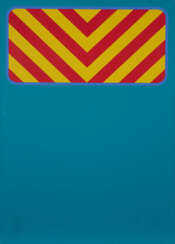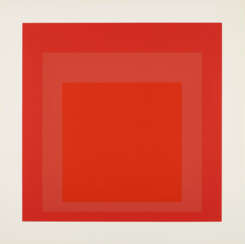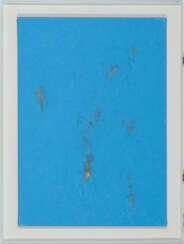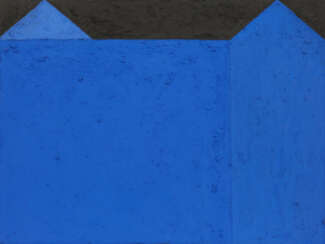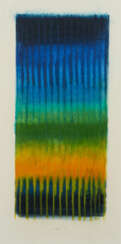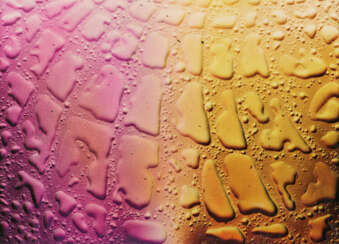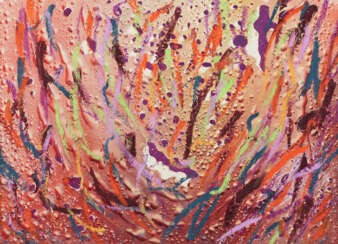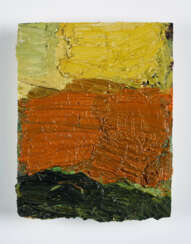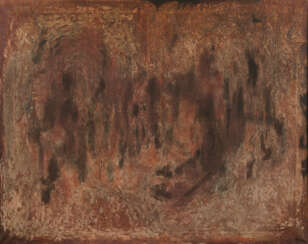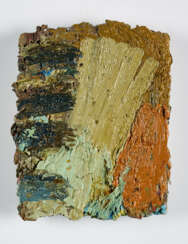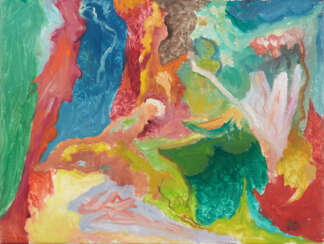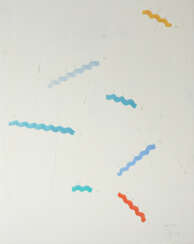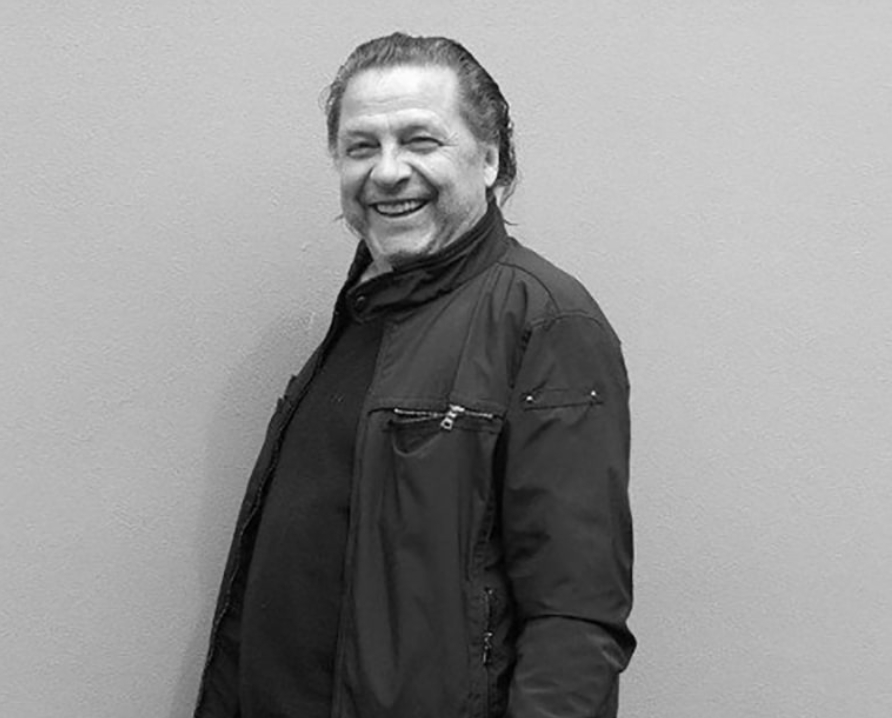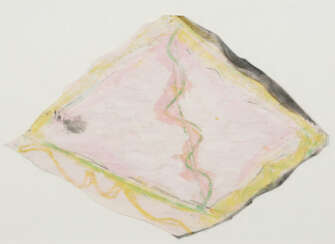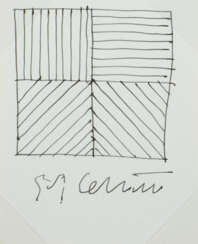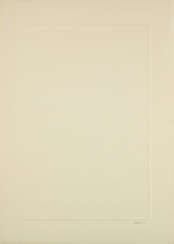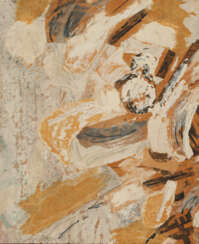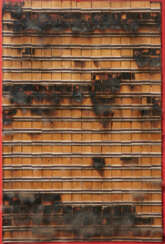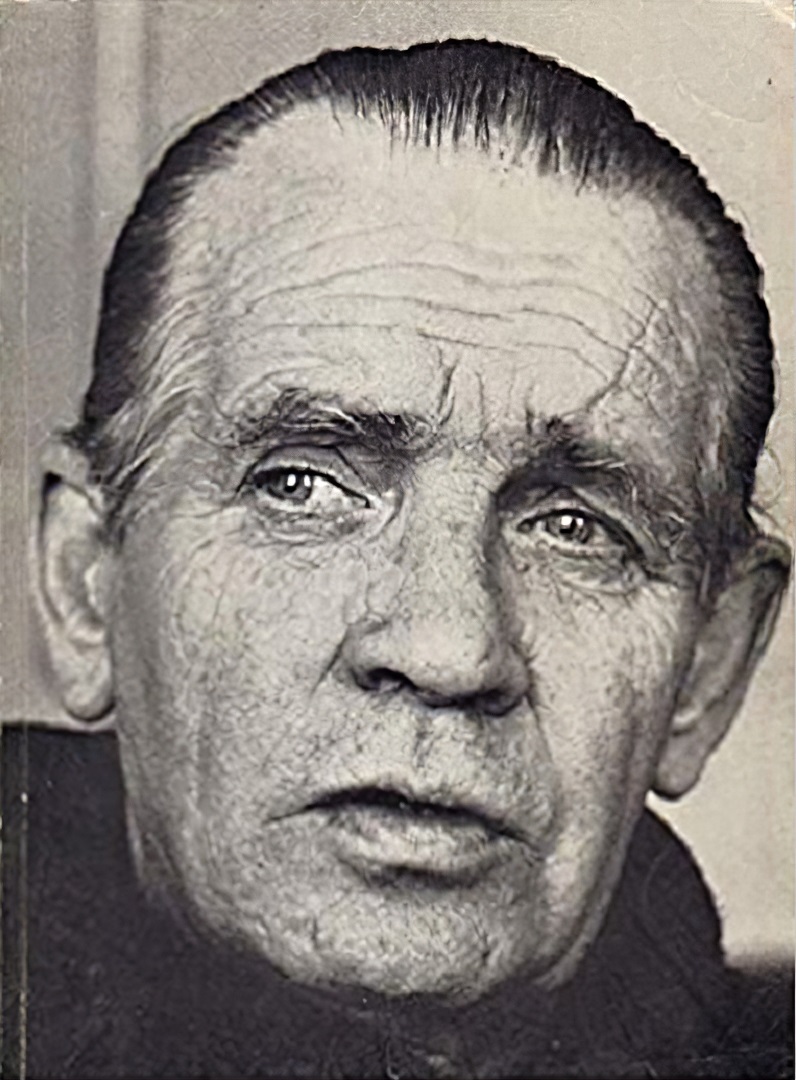
Post War paintings, drawings, watercolours — A1256: Ways of Seeing Abstraction
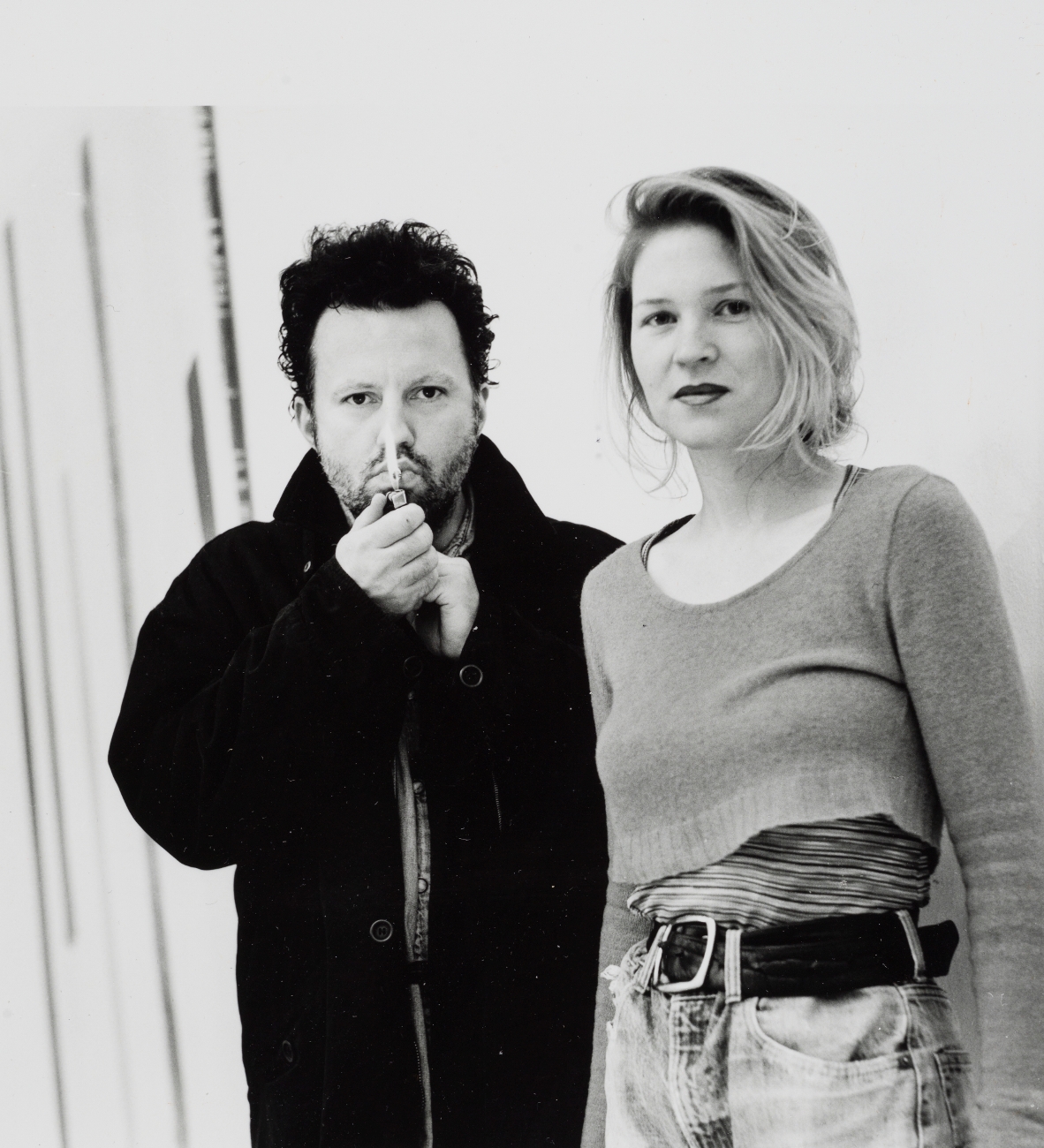
Frances Scholz is a vibrant figure in contemporary art and cinema. Scholz's education at the Hochschule der Künste in Berlin from 1982 to 1988 laid the groundwork for a career that spans painting, video art, and filmmaking. She is known for her conceptual approach to art, often blending narrative and abstraction to explore themes of memory, perception, and the construction of reality.
One of Frances Scholz's significant contributions to the art world is her film "Amboy," co-written and produced with science fiction writer Mark von Schlegell. Premiered in 2015, "Amboy" delves into the cultural mythologies and hallucinatory fabric of Los Angeles through a series of interconnected, unscripted encounters. The film is notable for its exploration of identity and the elusive nature of artistic legacy, set against the backdrop of the Mojave Desert's ghost towns. Scholz's work in "Amboy" exemplifies her interest in the intersection of narrative and visual art, utilizing a collaborative and open form of production that features contributions from notable figures in the art and entertainment industry.
Frances Scholz's artistry extends beyond filmmaking. She has exhibited widely, with notable shows at institutions such as the Chinati Foundation, where she held an open studio and screened "Amboy" in 2016, and solo exhibitions across the United States and Germany. Her work in group shows and solo exhibitions often reflects her multifaceted approach to media, including painting, video art, and installations, which are treated with the same editorial eye as her film material.
Currently living and working in Cologne, Frances Scholz continues to influence both the art and film worlds with her innovative projects. Her extensive body of work, including video art pieces like "The Moon" and "Awakening," and her involvement in collaborative projects, underscores her role as a dynamic force in contemporary culture.
For collectors and experts in art and antiques, Frances Scholz represents a unique investment in the overlap of visual art and cinema. Her ability to navigate and blend these worlds offers a rich tapestry of works that are both intellectually stimulating and visually compelling.
Stay updated on Frances Scholz's latest projects and exhibitions by signing up for newsletters focused on contemporary art and film. This subscription ensures you're informed about new sales, auction events, and exclusive insights into Scholz's evolving creative journey.

Kimber Smith was an American abstract painter. Best known for his lyrical compositions and distinctive lexicon of personal symbols, he eschewed the aggressive monumentality of the Abstract Expressionist era to focus on relatively small paintings of simple, entropic forms and colors. Smith went on to study at the Art Students League of New York shortly after the end of World War II. He would subsequently move to Paris, France in 1954, where he befriended fellow American ex-patriate painters Sam Francis and Joan Mitchell. Upon his return to New York in 1966, Smith had gained significant critical acclaim, which led to his mounting a solo exhibition at the Dayton Art Institute in Ohio in 1967 and garnering a Guggenheim Fellowship in 1971. Today, his paintings among the collections of the Stedlijk Museum in Amsterdam and the Zurich Art Museum, among others.

Kimber Smith was an American abstract painter. Best known for his lyrical compositions and distinctive lexicon of personal symbols, he eschewed the aggressive monumentality of the Abstract Expressionist era to focus on relatively small paintings of simple, entropic forms and colors. Smith went on to study at the Art Students League of New York shortly after the end of World War II. He would subsequently move to Paris, France in 1954, where he befriended fellow American ex-patriate painters Sam Francis and Joan Mitchell. Upon his return to New York in 1966, Smith had gained significant critical acclaim, which led to his mounting a solo exhibition at the Dayton Art Institute in Ohio in 1967 and garnering a Guggenheim Fellowship in 1971. Today, his paintings among the collections of the Stedlijk Museum in Amsterdam and the Zurich Art Museum, among others.
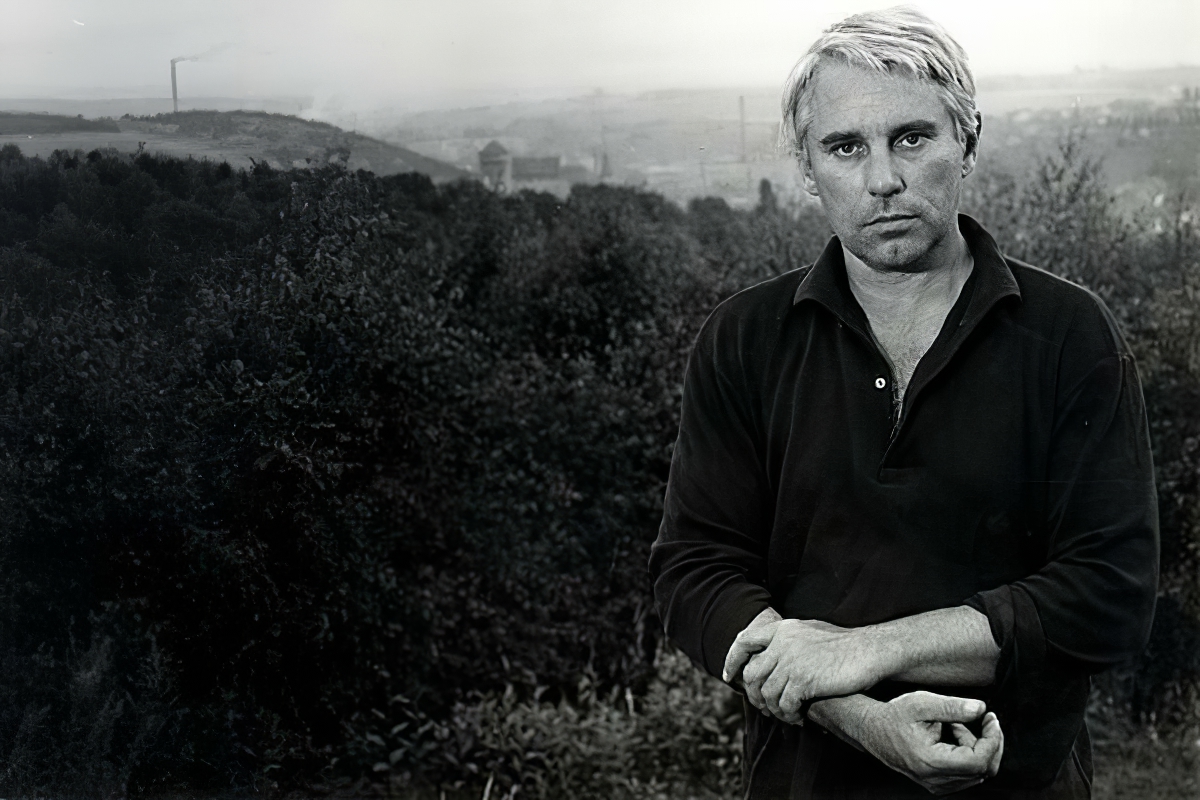
Karl Fred Dahmen is a German artist, one of the most important representatives of German post-war art and the Informel movement. In 1967 he took up the post of Professor of Fine Arts at the Munich Academy.
He painted expressive abstract pictures with a tectonic structure, and since the mid-1950s, relief paintings and collages on the damage to the local landscape caused by open-pit mining. Later in Dahmen's oeuvre, glazed object boxes appear, recounting the impressions of his daily working life.
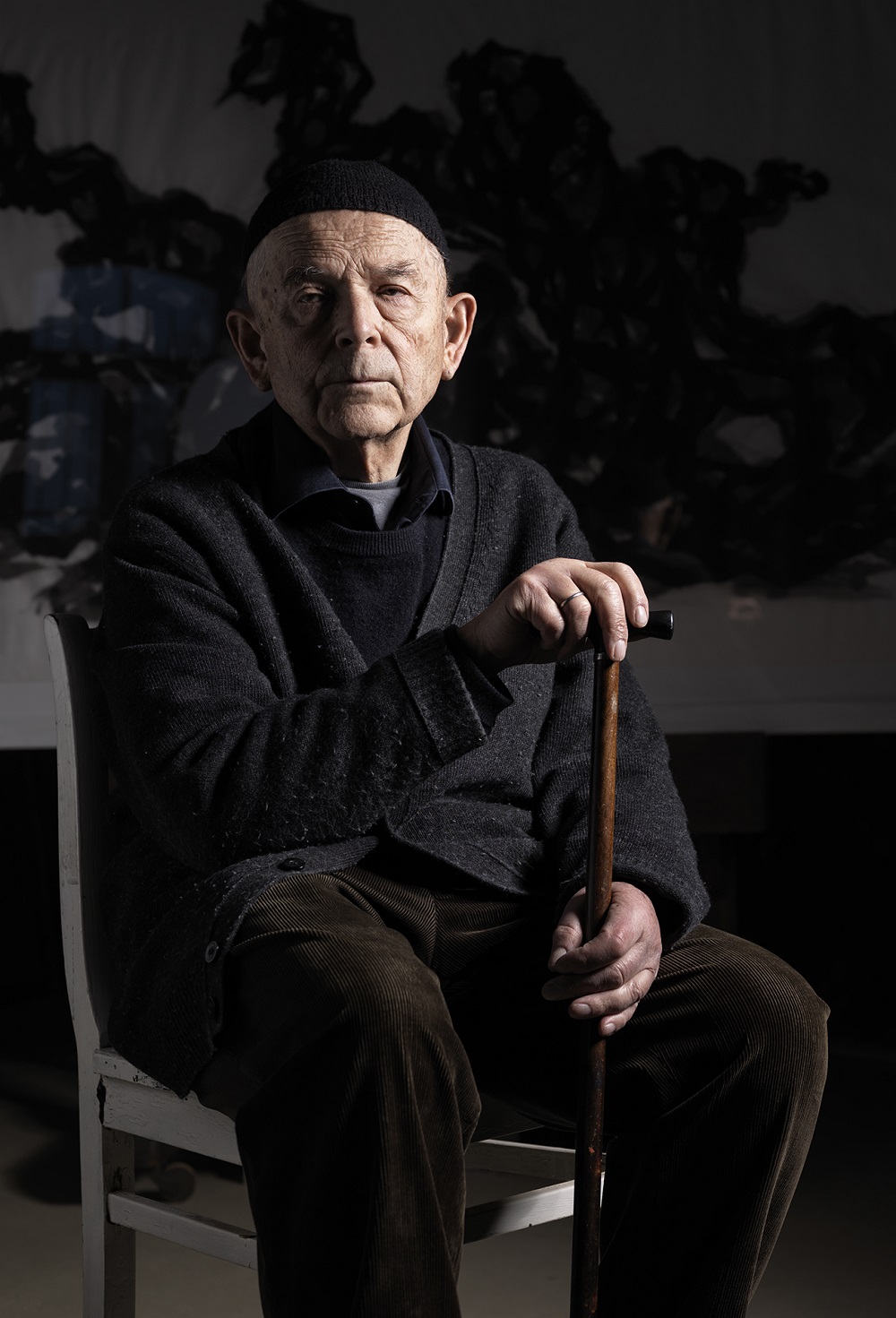
Max Uhlig is a German painter. He won the Hans Theo Richter-Preis of the Sächsische Akademie der Künste in 1998.
In 1978, Max Uhlig presented his characteristic paintings for the first time in the Dresden Kupferstichkabinett.
"Black and white or in colour, lines in the expressive rhythm of their superimposition draw the image mode and the conciseness of an extensive, unmistakable work that is a discovery. Today Max Uhlig is one of the last representatives of the era of open-air painting in modern art that began 150 years ago, but his work elevates it to the height of our time." His late work received significant impulses from annual stays in Faucon (southern France) from 1991 to 2010.
Max Uhlig has been a member of the German Association of Artists since 1990 and a founding member of the Saxon Academy of the Arts. From 1995 to 2002, he was the professor for painting and graphics at the University of Fine Arts in Dresden.

Max Uhlig is a German painter. He won the Hans Theo Richter-Preis of the Sächsische Akademie der Künste in 1998.
In 1978, Max Uhlig presented his characteristic paintings for the first time in the Dresden Kupferstichkabinett.
"Black and white or in colour, lines in the expressive rhythm of their superimposition draw the image mode and the conciseness of an extensive, unmistakable work that is a discovery. Today Max Uhlig is one of the last representatives of the era of open-air painting in modern art that began 150 years ago, but his work elevates it to the height of our time." His late work received significant impulses from annual stays in Faucon (southern France) from 1991 to 2010.
Max Uhlig has been a member of the German Association of Artists since 1990 and a founding member of the Saxon Academy of the Arts. From 1995 to 2002, he was the professor for painting and graphics at the University of Fine Arts in Dresden.
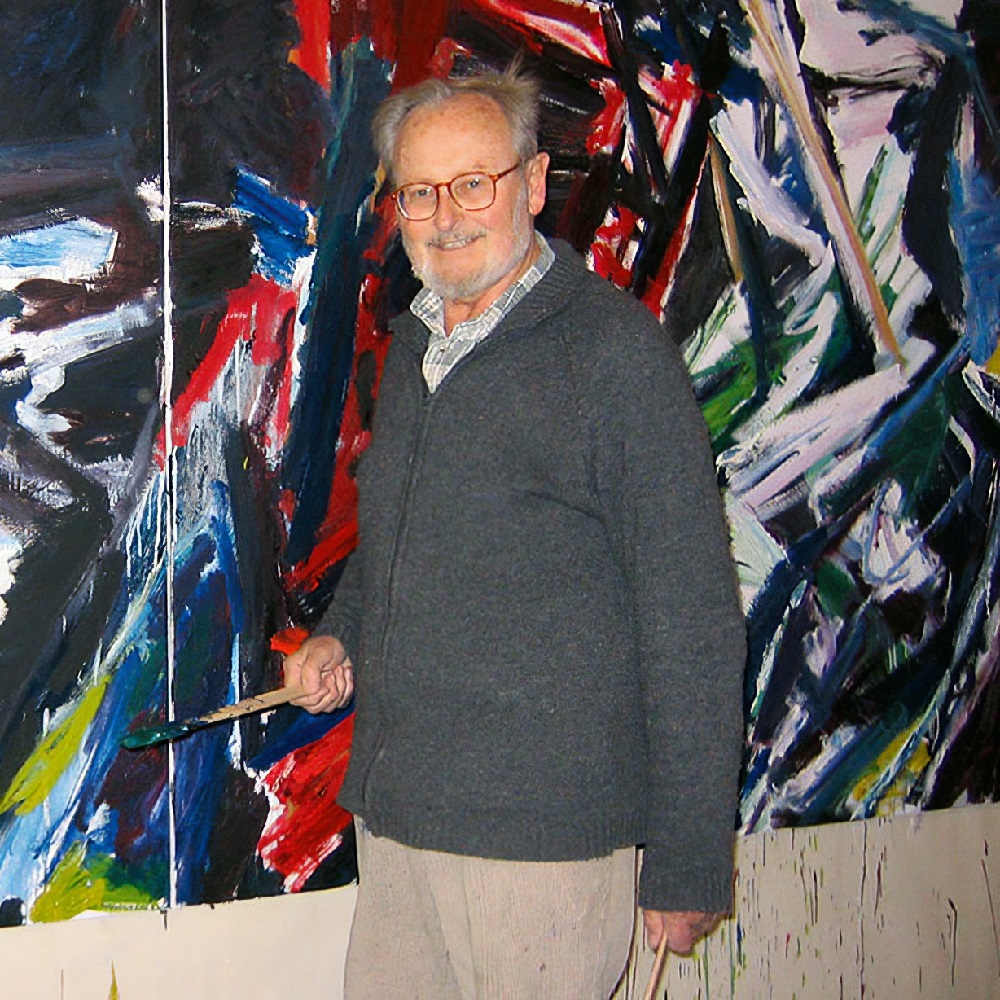
Helmut Sturm was a German painter.
From 1952 to 1958, he studied at the Akademie der Bildenden Künste, Munich. After this he joined Heimrad Prem, Lothar Fischer and Hans-Peter Zimmer in founding Gruppe SPUR, which in 1959 entered the Situationist International.
From 1980 to 1982, he was guest professor at the Hochschule der Künste, Berlin, taking over Hann Trier's class. He continued to exhibit across Germany and from 1985 to 1998 was professor at the Akademie der Bildenden Künste, Munich.

Helmut Sturm was a German painter.
From 1952 to 1958, he studied at the Akademie der Bildenden Künste, Munich. After this he joined Heimrad Prem, Lothar Fischer and Hans-Peter Zimmer in founding Gruppe SPUR, which in 1959 entered the Situationist International.
From 1980 to 1982, he was guest professor at the Hochschule der Künste, Berlin, taking over Hann Trier's class. He continued to exhibit across Germany and from 1985 to 1998 was professor at the Akademie der Bildenden Künste, Munich.

Helmut Sturm was a German painter.
From 1952 to 1958, he studied at the Akademie der Bildenden Künste, Munich. After this he joined Heimrad Prem, Lothar Fischer and Hans-Peter Zimmer in founding Gruppe SPUR, which in 1959 entered the Situationist International.
From 1980 to 1982, he was guest professor at the Hochschule der Künste, Berlin, taking over Hann Trier's class. He continued to exhibit across Germany and from 1985 to 1998 was professor at the Akademie der Bildenden Künste, Munich.
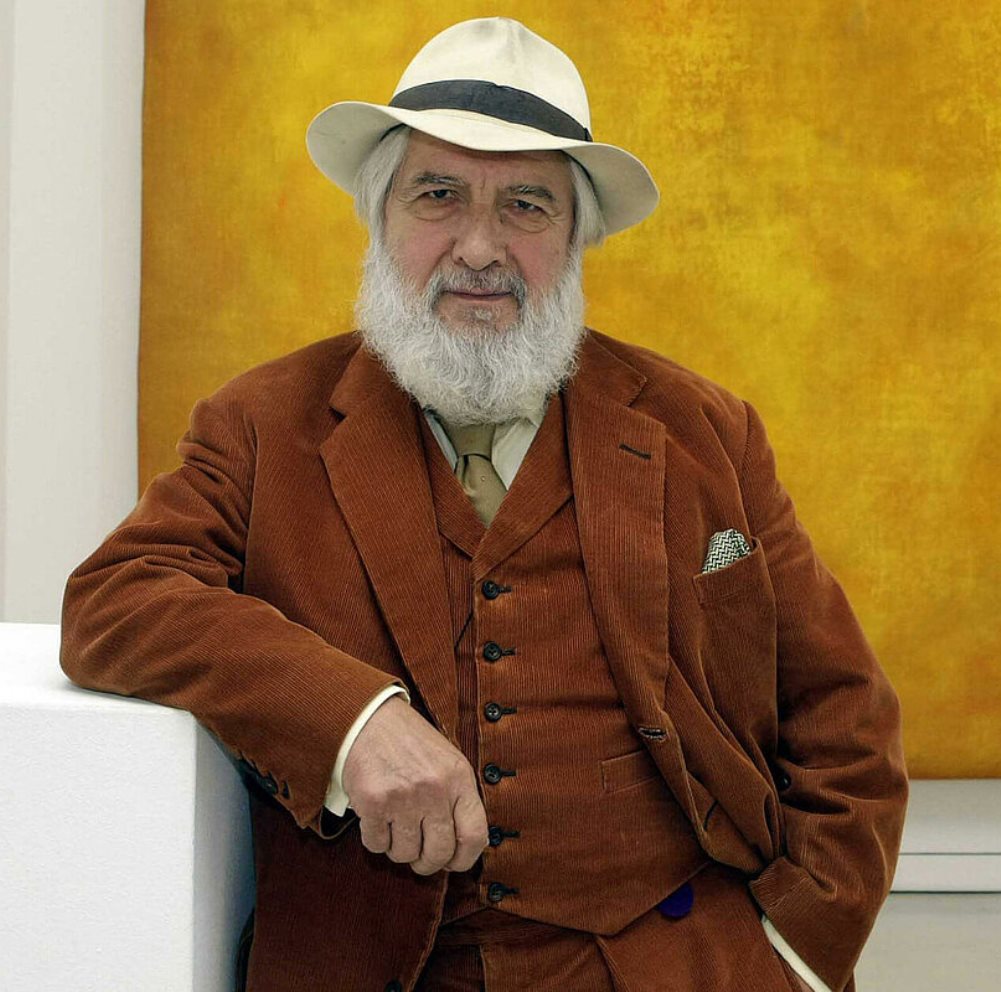
Gotthard Graubner was a German abstract painter associated with the post-war Zero and Informel movements. Graubner's work is known for its focus on color and its relationship to space and perception.
Graubner studied at the Kunstakademie Düsseldorf under the painter Georg Meistermann. In the 1950s, he became associated with the Zero group, a movement of artists who sought to create a new art form that was free of traditional artistic conventions and focused on the use of unconventional materials.
In the 1960s, Graubner began creating his signature "color-space bodies," large canvases that were mounted away from the wall and filled with thick layers of pigment. These works were designed to be experienced as three-dimensional objects that were both paintings and sculptures, and they often created a sense of depth and spatial ambiguity.
Graubner's work was exhibited widely in Europe and the United States, and he was the recipient of numerous awards and honors throughout his career. He also taught at several art schools, including the Kunstakademie Düsseldorf and the Städelschule in Frankfurt.
Graubner's innovative approach to painting and his exploration of the relationship between color, space, and perception continue to be an important influence on contemporary art.
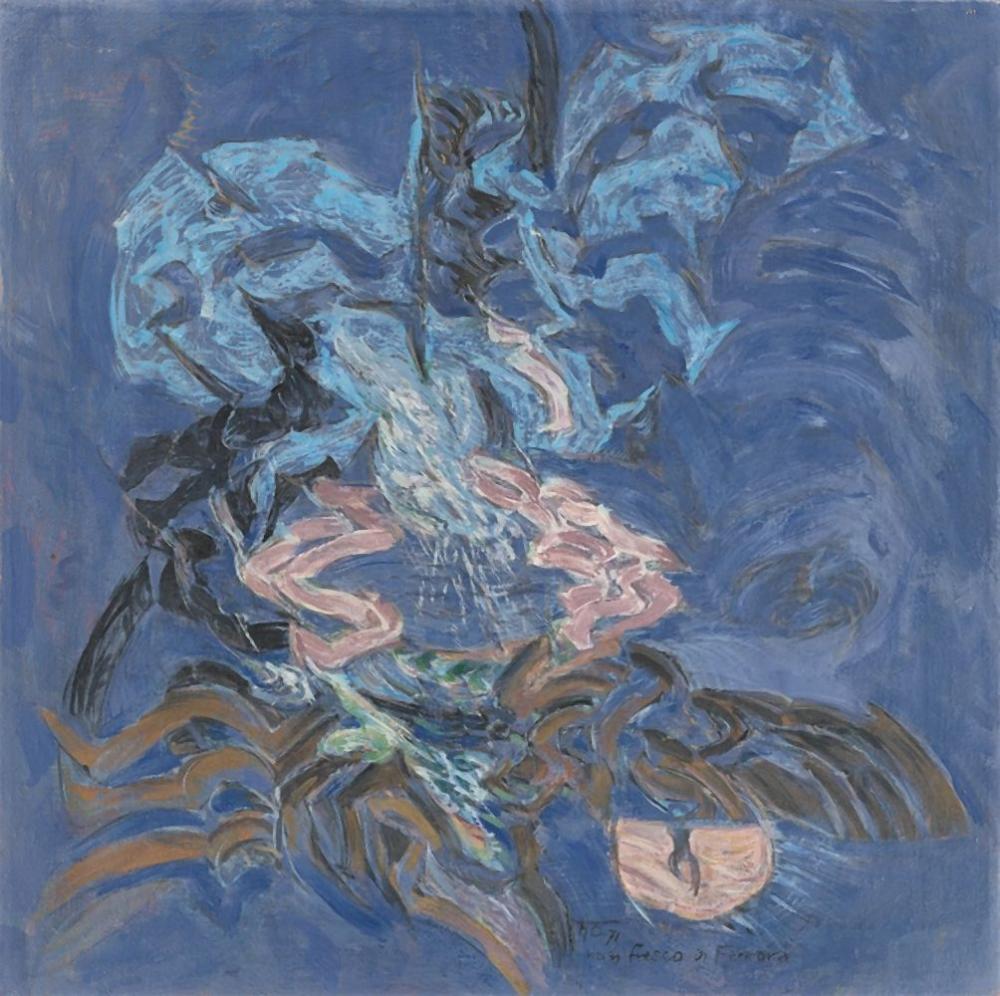
Hann Trier was a German abstract expressionist watercolourist and graphic artist. Hann Trier is best known for his giant ceiling paintings in the Charlottenburg Palace. He was the older brother of the art historian Eduard Trier (1920-2009).
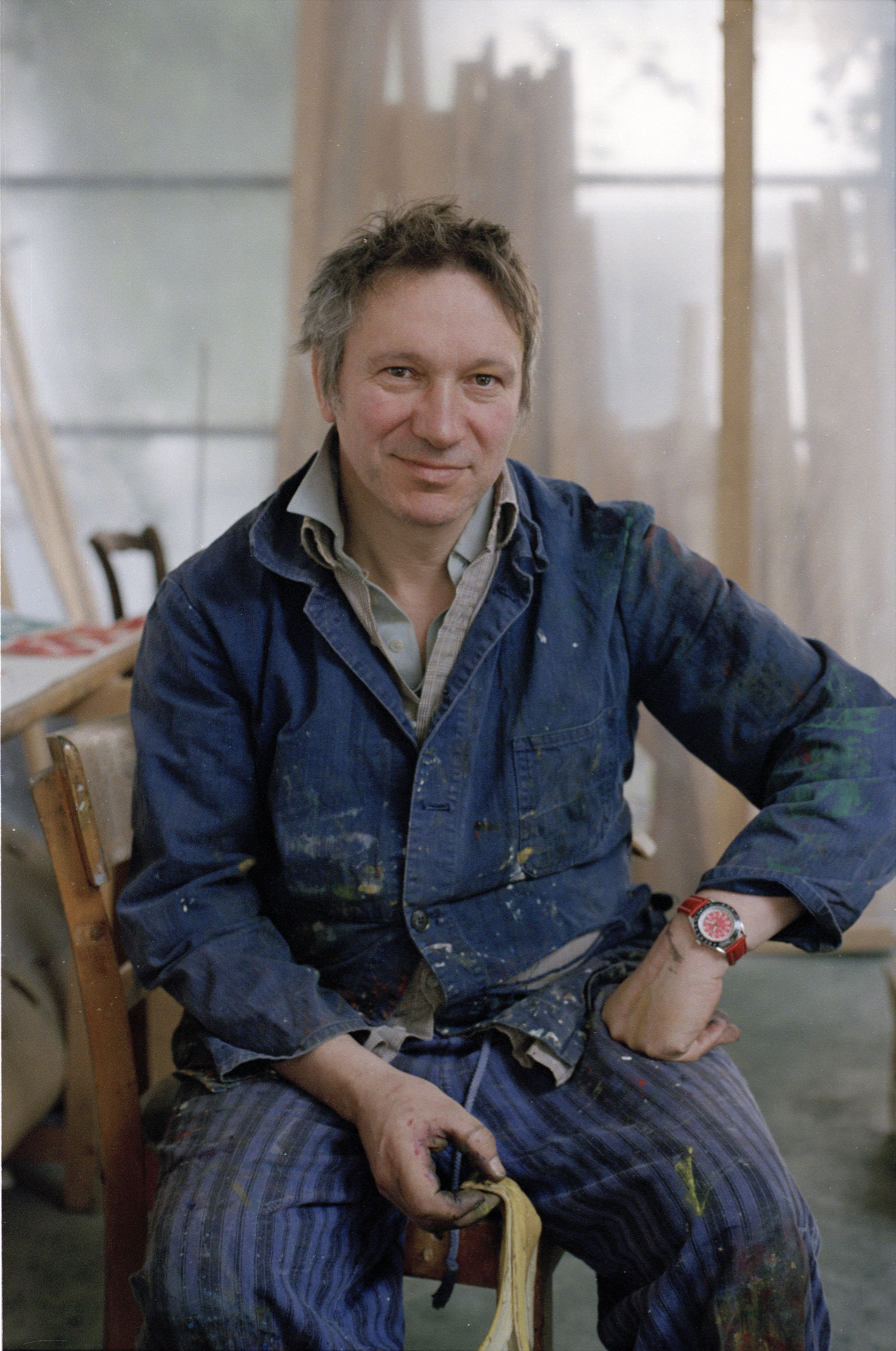
Norbert Prangenberg was an abstract painter, sculptor, and engraver. Though he had no formal training and did not fully engage with art until his 30s, Prangenberg did finally come up with a style that was uniquely his own, not fitting comfortably into the neo-expressionist or neo-geo movements of his time, in the 1970s and 1980s. At this time, he was considered a major figure in contemporary German art. Though he got his start with abstract paintings, he also became known for making sculptures of all sizes; and while his work initially appears abstract, the titles given sometimes allude to the human body or a landscape. As a trained gold- and silversmith, as well as a glassblower, he always showed an attention to materials and how they could be physically engaged with. He was interested in how his own two hands could affect the painting or sculpture's surface. Traces of the artist's hand appear literally throughout his entire oeuvre, before he lost the battle with liver cancer in 2012.

Hann Trier was a German abstract expressionist watercolourist and graphic artist. Hann Trier is best known for his giant ceiling paintings in the Charlottenburg Palace. He was the older brother of the art historian Eduard Trier (1920-2009).

Hann Trier was a German abstract expressionist watercolourist and graphic artist. Hann Trier is best known for his giant ceiling paintings in the Charlottenburg Palace. He was the older brother of the art historian Eduard Trier (1920-2009).

Hann Trier was a German abstract expressionist watercolourist and graphic artist. Hann Trier is best known for his giant ceiling paintings in the Charlottenburg Palace. He was the older brother of the art historian Eduard Trier (1920-2009).
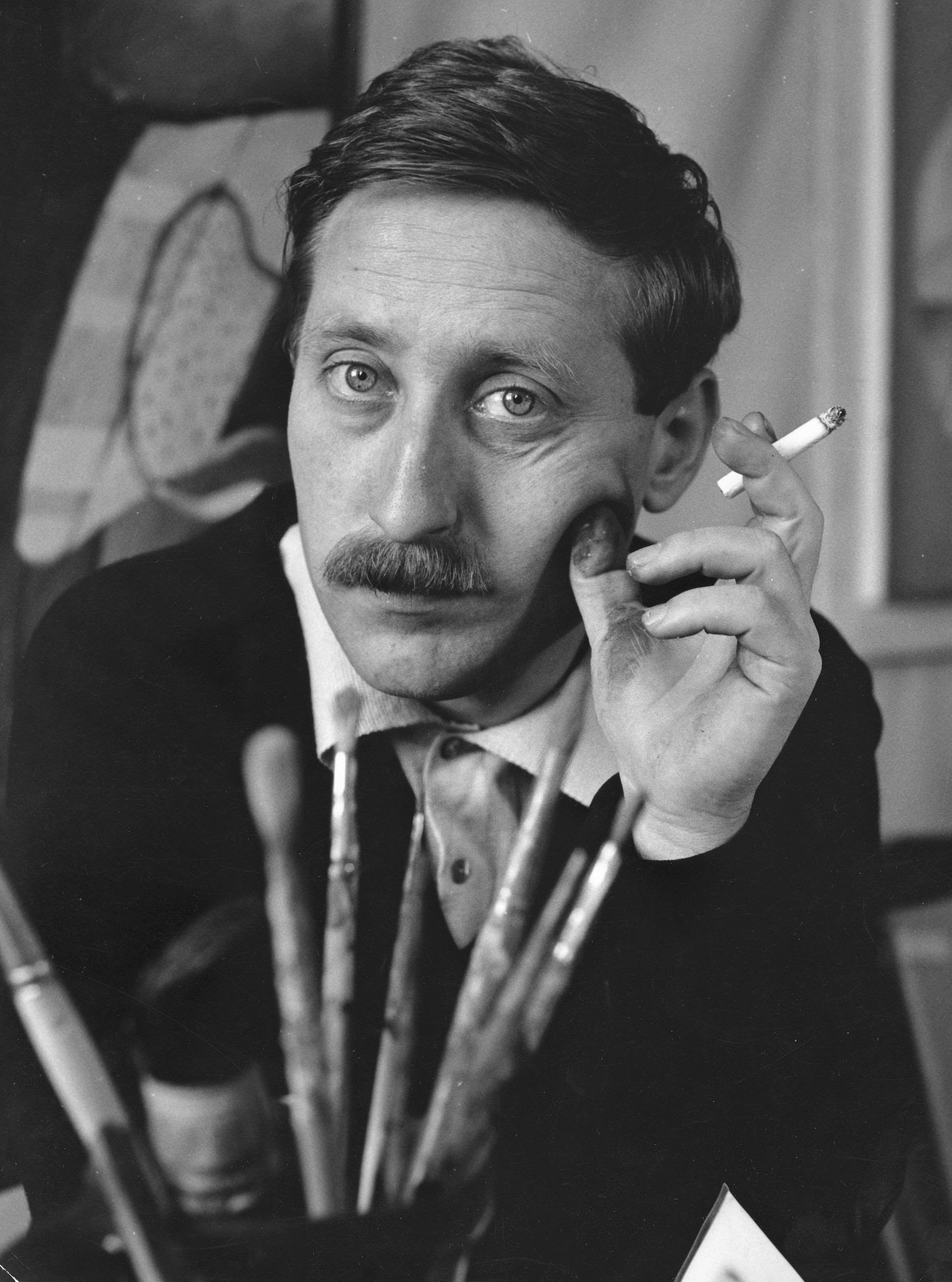
Horst Antes was a German painter, graphic artist and sculptor, a pioneer of the new figurative painting in Germany.
After studying at the Karlsruhe Academy of Fine Arts from 1957 to 1959, Antes taught there himself and later became a professor there.
Antes became known for the Kopffüßler (head-foot) image, which has been a recurring theme in his paintings, sculptures and graphic works since the early 1960s. Antes' work is represented in several major collections in Berlin, Hamburg, Cologne and elsewhere in Germany.






